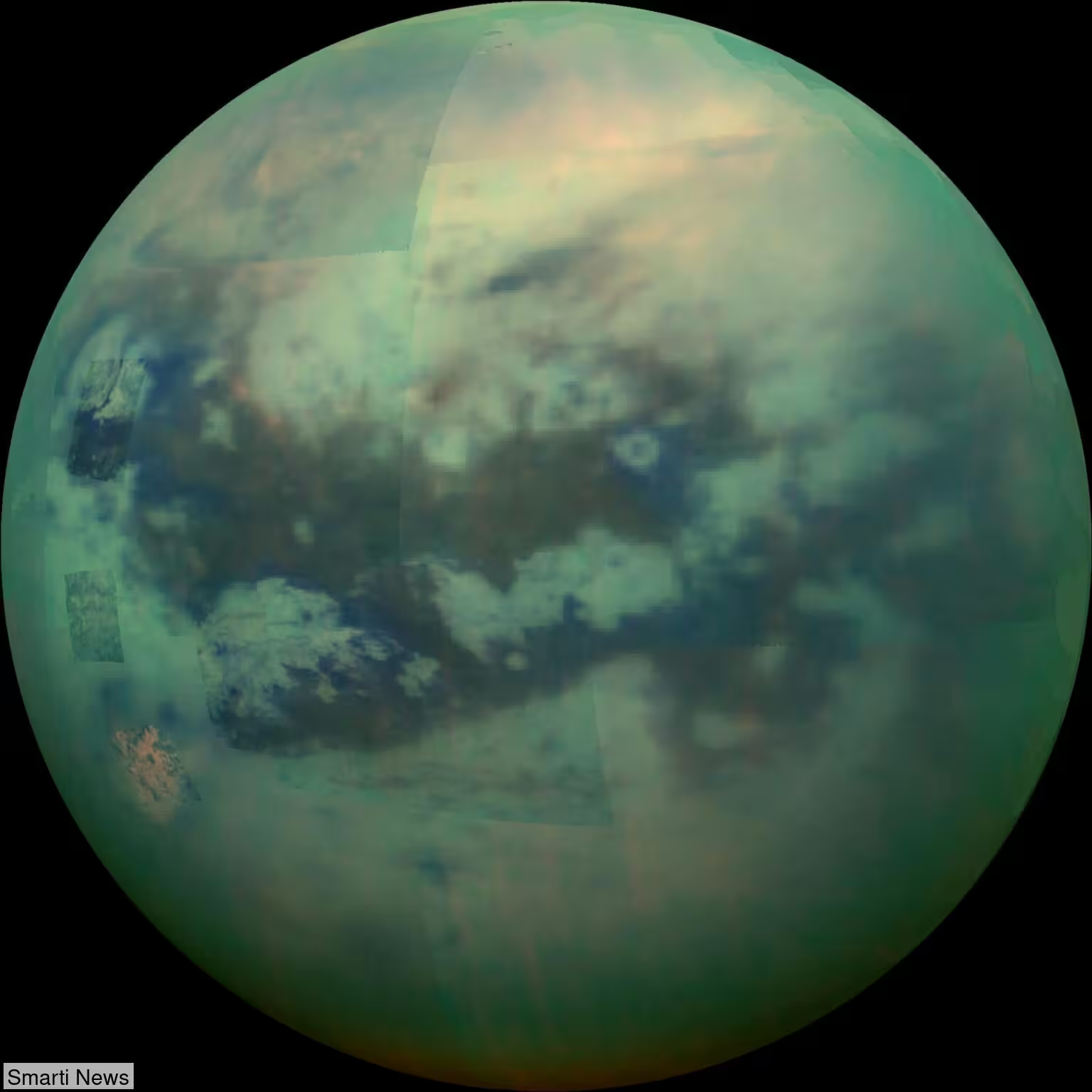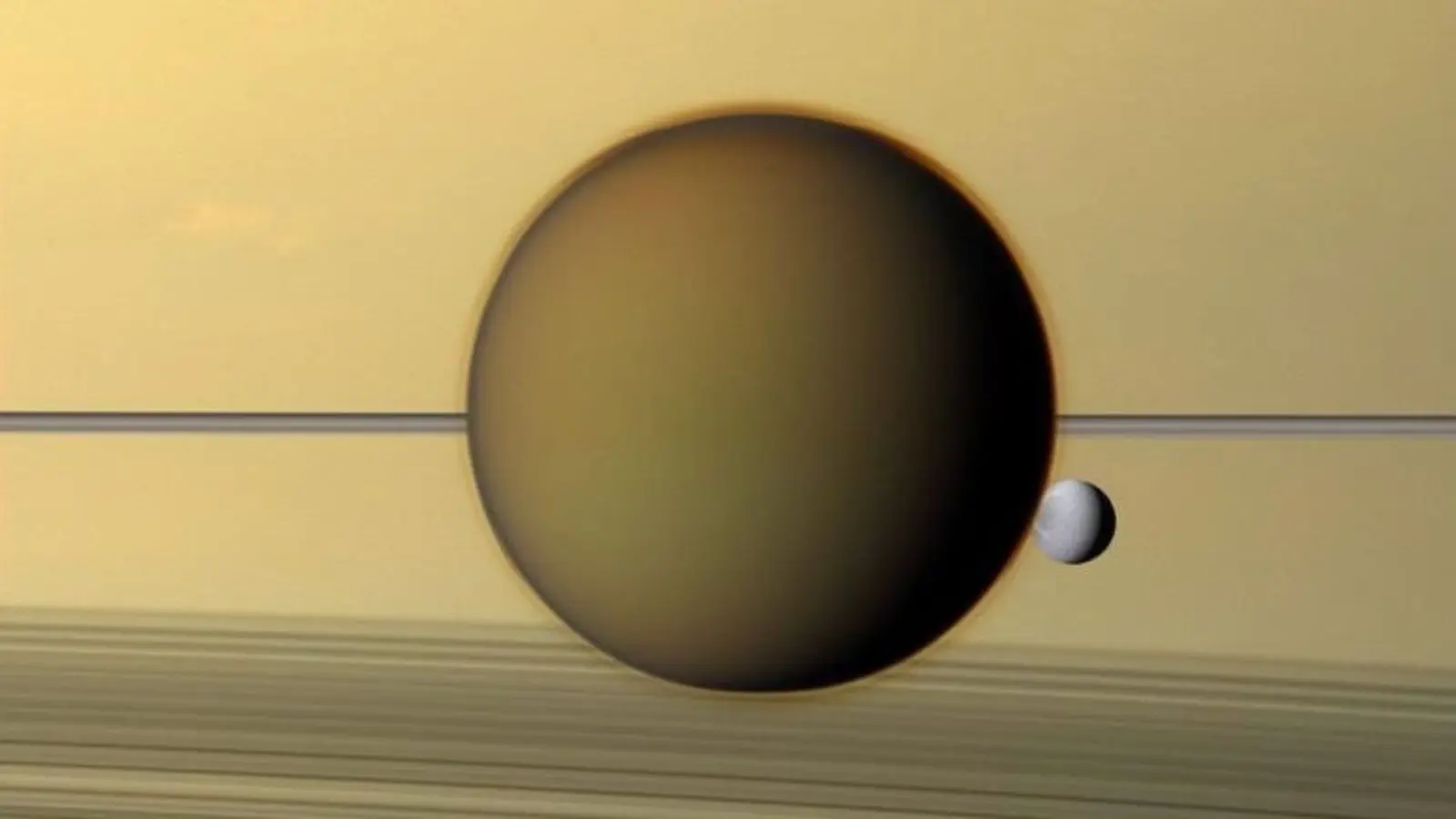6 Minutes
Scientists studying Saturn's moon Titan have found that extreme cold enables unlikely partnerships between molecules. New laboratory experiments and computer models suggest that hydrogen cyanide — a strongly polar molecule — can form stable solid structures with nonpolar hydrocarbons like methane and ethane under Titan-like conditions. If confirmed, these co-crystals would upend a textbook rule of chemistry and alter how we interpret Titan's landscapes and prebiotic chemistry.
Why this discovery puzzles chemists
One of chemistry's simplest lessons is "like dissolves like": polar molecules tend to interact with other polar molecules, and nonpolar ones prefer nonpolar partners. Water and oil famously refuse to mix because of this principle. Hydrogen cyanide (HCN), a polar molecule abundant on Titan, would therefore be expected to stay separate from Titan's hydrocarbon lakes made of methane and ethane.
But researchers led by chemist Fernando Izquierdo-Ruiz (Chalmers University of Technology) working with teams at NASA's Jet Propulsion Laboratory have produced experimental and theoretical evidence that, at roughly -180 °C, hydrogen cyanide crystals can trap methane and ethane inside their lattice. The result: co-crystals — solid materials composed of two or more distinct molecular species — that should not exist according to ordinary expectations.
How the experiments and models were done
Low-temperature lab work mirrors Titan's surface
To simulate Titan's frigid surface, the research groups cooled experimental chambers to about -180 °C (-292 °F). In that environment HCN is solid while methane and ethane are liquids. Scientists grew HCN crystals and then exposed them to methane, ethane, propane and butane while monitoring molecular vibrations using Raman spectroscopy.
Raman spectra showed subtle but consistent shifts in HCN's vibrational modes after exposure to methane and ethane — a clear sign that hydrocarbons were not merely coating crystal surfaces but interacting with the HCN lattice itself. The observed shifts implied that hydrogen bonds inside the hydrocyanide structure were being bent or slightly strengthened by the guest hydrocarbons.
Computer simulations confirm the mechanism
Complementary computational chemistry work modeled how molecules behave near absolute cold. At Titan-like temperatures, thermal motion is much reduced, and transient gaps in the HCN crystal lattice can allow small nonpolar molecules to slip in. Simulations showed stable co-crystal arrangements where methane and ethane occupy interstitial sites and form ordered solids with HCN — energetically favorable under Titan conditions.
What this means for Titan and astrobiology
These findings shift how scientists may interpret radar and infrared observations of Titan's surface. Co-crystals of HCN and hydrocarbons would have distinct physical properties — density, reflectivity and mechanical strength — that could influence lake chemistry, shoreline processes and dune formation. Titan's hydrocarbon seas have already been shown by Cassini to be rich and varied; adding a family of previously unknown solids complicates the picture in an intriguing way.
Beyond geology, hydrogen cyanide is central to many prebiotic chemistry pathways on Earth and in lab experiments: it can lead to nucleobases and amino acid precursors when transformed under the right conditions. If HCN is sequestered into solids with methane and ethane, the availability and reactivity of HCN in Titan's surface and near-surface environments could be different than models currently assume — with implications for theories about chemical evolution in cold planetary bodies.

Infrared observations by the Cassini probe in 2015 revealed the methane lakes under Titan's hazy atmosphere. (NASA/JPL/University of Arizona/University of Idaho)
Implications for future missions and measurements
NASA's Dragonfly rotorcraft mission — currently scheduled to arrive in the 2030s — will explore Titan's chemistry in situ. Until then, lab work and remote sensing must guide expectations. If co-crystals are widespread, instruments targeting surface composition, thermal inertia and dielectric properties should be re-evaluated to account for unusual solid phases.
In practical terms, co-crystalline solids could alter how materials respond to mechanical stress (affecting dune mobility) or how they absorb and scatter light in infrared wavelengths (affecting spectral interpretations). Remote observations that currently attribute features to simple ices or organic sediments may need reinterpretation.
Expert Insight
"We often teach chemistry rules as if they're laws of nature, but Titan is a reminder that environment matters," says Dr. Anika Moreno, a planetary chemist not involved in the study. "At -180 °C, molecules move so little that surprising assemblies can form. These co-crystals show how planetary conditions can unlock chemistry that we don't typically see on Earth. For mission planners, it's a cue to design instruments sensitive to unexpected solid phases."
Next steps and open questions
The research team plans to expand experiments to other hydrocarbons and nitriles, mapping which combinations form stable co-crystals at different temperatures and pressures. Open questions include the abundance of these phases on Titan, how they form and persist in natural settings, and whether seasonal or meteorological changes could mobilize or break them down.
For now, the discovery is a striking example of how a familiar chemical rule can be bent in an alien context. As the research puts it, these structures are "a humbling reminder of just how surprising fundamental chemistry can be." With Dragonfly and further laboratory work on the horizon, Titan's lakes and shores promise to remain a fertile ground for discoveries about chemistry, geology and the precursors of life.
Source: sciencealert
Comments
DaNix
Is this even true? Lab cold vs Titan reality, plus surface dynamics... sounds neat but I want in situ proof, quick comment, skeptical.
astroset
No way, Titan surprises again. HCN trapping methane? mind blown, if true this rewrites so much. Dragonfly can't come soon enough!!


Leave a Comment